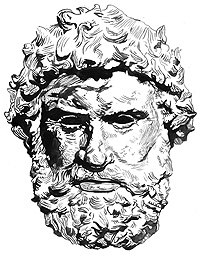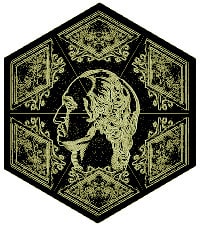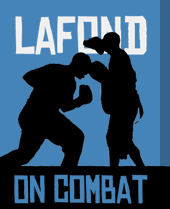Terminology
A look at the glossary will show a number of different terms from different dialects for such items as spear, knife and stick. This reference will not use Greek terms for armor and will not attempt to include all of the various terms for common weapons. As with the swords we are concerned with major weapon types, with the glossary providing amble variation.
Clothing
This is a cursory study. I recommend Roman Army.com for detailed and accurate attire. Clothing is also an area where movies can be trusted better than novels, as there are experts on attire who specialize in providing period theatrical costumes.
Any Osprey book, or any book on period militaries illustrated by Angus Mcbride, will provide examples of period attire. Overall clothing in the ancient world remained remarkably unchanging, even as weaponry and armor constantly evolved.
Over all sandals were the common foot gear in civilized setting, with a type of moccasin favored by barbarians, and shoes for Asiatic horsemen.
Men in the ‘sandal zone’ would generally wear a skirt or belted long shirt of some type, with women usually in one full garment. Ceremonial garments tend to be loose, cumbersome and flowing. In everyday life the people of Hellas dressed much more lightly than today.
The main consideration is the travelling garment, or what gets tossed over your shoulders when braving the seas and hinterlands.
Aegis: The classical cloak is a heavy affair intended for political and sacral figures. Judges, teachers, athletic officials and rulers would wear an aegis, which is also understood metaphorically to be something of a social shield, with the cloak of Zeus rendering him invulnerable. There is much speculation as to the nature of the aegis, with most claiming it as a shield, and some an animal skin.
The term Rinon: a hide or shield, points to the origin and evolution of the shield from the cloak.
Shields, all around the world, evolved from animal skin cloaks used for defense in combat—down to the fight between Pizzaro and his assassins in 16th Century Peru in which he used a drapery for a shield, and to the Zulu and Indian wars of the 19th Century inn which tribal shields were still made of animal hide. In this author’s mind the cloak as skin and shield were one and the same, as attested by the ancient habit of naming cloaks of office in this manner.
Khiton: A common travelling tunic, or even a coat of mail for a soldier [which were often made of draped animal skin or layered and quilted fabric] were all known by this term. The article of traveler’s clothing is the common reference that has come down to us. But for a soldier of the lighter types—such as a peltast—they are one in the same, armor and clothing, serving them in the same way as Zeus’ mythic aegis did him, as garment and shield. Among barbarians from the hinterlands this may often be a type of poncho, with a longer heavier flap over the shield arm and a lighter more easily cast back flap over the throwing arm.
Khlamis: or military cloak, was a loose neck clasped
garment that hung to within inches of the ground, being as voluminous as possible to serve as a shelter half, ground cloth or blanket. The Spartans famously dyed theirs red.
A Kynen, or soldier’s cap, was standard among barbarians and the lower class support troops. A wide-brimmed hat was favored by Hellenic horsemen, who needed the shade for their eyes while scouting and patrolling. Asiatic horsemen, including Skythians, who were archers, used the cap instead as it would not obstruct their draw.
Caps would often be ‘coifed’ with the shoulders covered. This coifed cap arrangement together with a khiton or khlamis would shed most of the rain and snow that travelers dreaded on the march. Some barbarian tribes favored wolf or fox heads for their coifed caps, with the entire animal skin forming the garment.
Equipment
The Zostir, or “war-belt” would be the most common piece of gear that was not a weapon or armor. Troops of all types, from skirmishers to heavy infantry, would require a war-belt, which would sometimes have a diagonal shoulder strap.
Various types of cases for bows, arrows, spears, darts and javelins were in use. The strings or bows and the composite materials of the bow itself must be preserved from rot. Also the shafts of spears, javelins darts and arrows were liable to warp and negatively affect their accuracy. Arrow cases in particular might have interior notches to avoid warping of the arrows.
Ancient Hellas was considerable wetter and greener than today, and their primary domestic animal was cattle. Cowhide and ox-hide were among the most common materials, making the smell and creak of leather common on the march.
In imagining the everyday concerns of the campaigning foot-soldier or horseman it is easy to overlook the mundane gear that has always been necessary to sustain men on the move in favor of the costumes or weapons. The real person who engages in a life of adventure through a driving pathos or due to the cruel hand of fate, is not likely to overlook the basics involved in getting from here to there with their tools intact—especially if they are hunters or fighting men.
The Hoplite Panoply is next











